Desktop Tips
Tip #523
July 9, 2024
Customize menu item anchor letters to make navigating menus with your keyboard more comfortable.
Have you noticed that in menus one letter is often underlined? If not, go on and right-click on the page to see for yourself. The underlined letters indicate which key on your keyboard to press to select that command. Pressing the letters instead of arrow keys makes using menus a lot faster. But first you need to make sure that the assigned letters make sense to you. If not, change them.
To edit menus:
- Go to Settings > Appearance > Menu > Menu customization.
- Locate the menu item you want to customize.
- Right-click on it and select “Rename”.
- Add the symbol
&in front of the letter you want to act as the anchor. - Press “Enter” to save the change.
Then to navigate menus using anchor letters, first use a shortcut to open the menu, for example, Shift + F10 to open web page’s context menu, and then press the letter (multiple letters, if the command is in a sub menu) to select and execute the command.
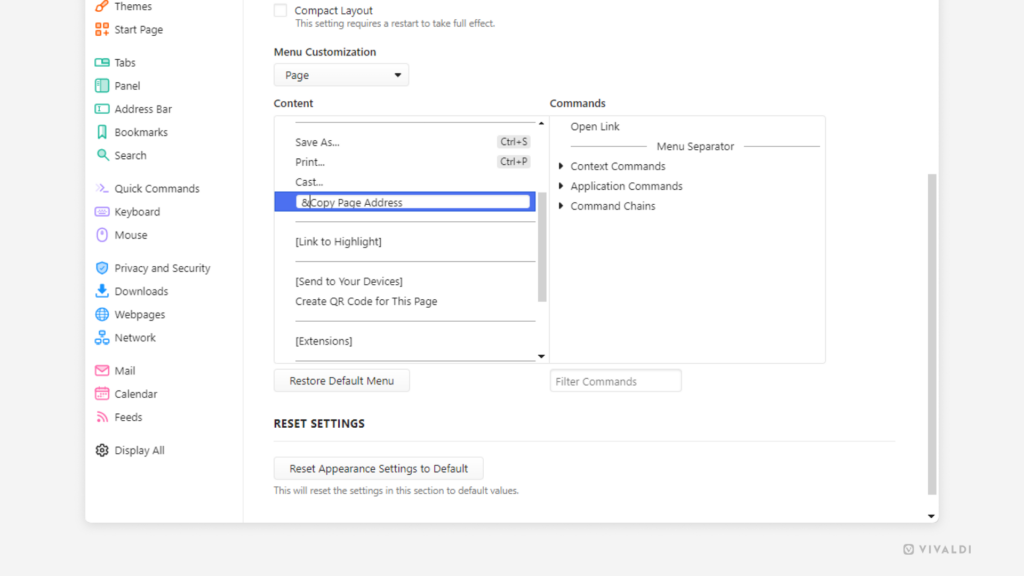
Tip #522
July 8, 2024
Undo accidental deleting and marking a message as read actions in Vivaldi Mail.
Did you unintentionally move an email to the Trash folder or did you change your mind about marking a message read? In Vivaldi Mail, you’ll find a menu listing your latest actions, so you can undo the ones you need.
To undo an action:
- Click the
 “Undo the Latest Mail Actions” button on the Mail toolbar.
“Undo the Latest Mail Actions” button on the Mail toolbar. - Select which message you want to restore to its previous state.
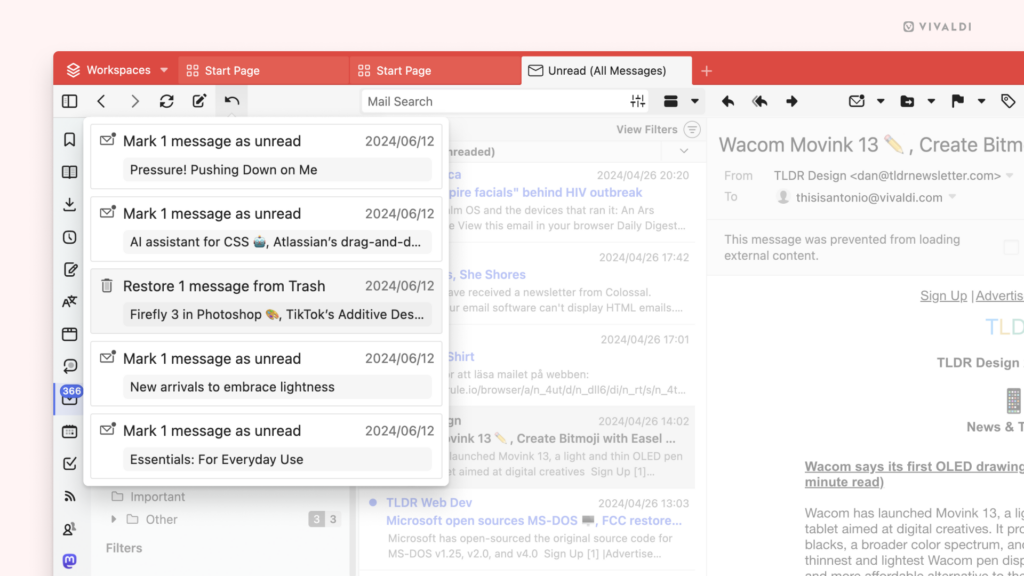
Tip #519
July 2, 2024
Make a smooth transition to Vivaldi by importing your favorite Extensions from other Chromium-based browsers.
To make your move from your old browser to Vivaldi smoother, you can import important data such as Bookmarks, Passwords, History, and, the latest addition, Extensions with just a few clicks.
To import Extensions:
- Make sure the browser you want to export from is closed.
- In Vivaldi, go to the
 Vivaldi menu > File > Import from Applications or Files.
Vivaldi menu > File > Import from Applications or Files. - Select the Chromium-based browser.
- Click “Start Import”.
- When the import has finished, click “Close”
- On the Extensions management page that opens, enable the extensions you want to use in Vivaldi by clicking the toggle button at the bottom right corner of each extension card.
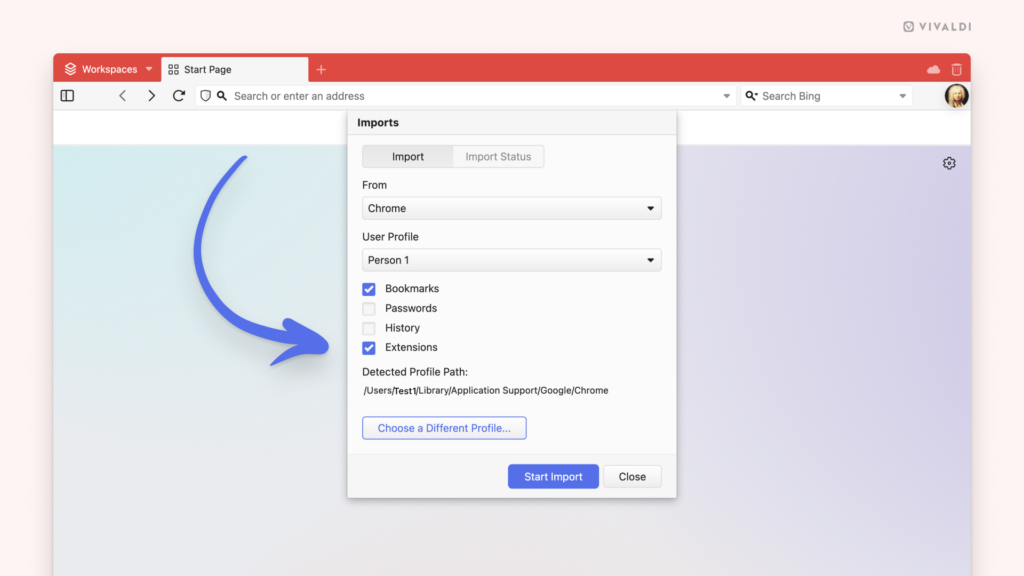
Tip #518
July 1, 2024
Move the active tab to a different Workspace using Command Chains.
You can find Keyboard Shortcuts for numerous actions in your Vivaldi browser and with Command Chains you can make many more. For example, you can create a chain for moving the active tab to a different Workspace and bind it to a Keyboard Shortcut and Mouse Gesture of your choice. You can also type the chain’s name in Quick Commands and even add a custom button on one of the toolbars to execute the chain on click.
To create a command chain for moving the active tab to a different workspace:
- Go to Settings > Quick Commands > Command Chains.
- Click on
 “Add Command Chain”.
“Add Command Chain”. - Give the new chain a name.
- Enter the following commands.
Use the “Add Command” button in the top right corner of the first command to add the next one.
“Add Command” button in the top right corner of the first command to add the next one.
- Focus Address Field
- Delay (100)
- Copy
- Delay (1000)
- Close Tab
- Switch to Workspace #
- New Tab
- Delay (100)
- Paste and Go
- Go to Settings > Keyboard > Workspaces and/or Settings > Mouse >
 New Gesture and find the chain you created.
New Gesture and find the chain you created. - Give the new chain a shortcut.
- Go to a page you want to move and use the shortcut to test your new Command Chain.
- Create the chain for each Workspace you have.
Tip #517
June 28, 2024
Press Ctrl + Shift + Enter to open the typed link or search in a new window.
In Tip #196, we showed you how to open a link or a search you entered in the Address Field in a new tab. But using a slightly different Keyboard Shortcut, you can also open it in a new browser window.
To open a new window from the Address Field:
- Enter a website URL or a search term in the Address Field.
- Press
Ctrl + Shift + Enter/⌘ ⇧ Enteron your keyboard.
Tip #515
June 26, 2024
Make the past fade away in the Vivaldi Calendar by dimming the events that have already passed.
If you’re using Vivaldi Calendar to manage your events and tasks you may have noticed that past events and completed tasks have their colors a bit faded. This lets you easily see what’s done and what’s still ahead.
Past event fading is enabled by default, but you can review and update the setting to match your preference in Settings > Calendar > Calendar Display.

Tip #514
June 25, 2024
Switch to an existing tab that already has the link open, instead of opening it in a new tab.
It’s easy to end up with more open tabs than you can keep track of. That’s why, when you type a link in the Address Field, Vivaldi will point out that you already have the same URL open in another tab, allowing you to switch to that tab instead of opening a duplicate tab.
To switch to an open tab:
- Enter the link in the Address Field.
- Instead of just pressing “Enter”, use an arrow key to select the “Switch to this tab” suggestion in the Address Field Drop-Down Menu and then press Enter. Alternatively, click on the suggestion.
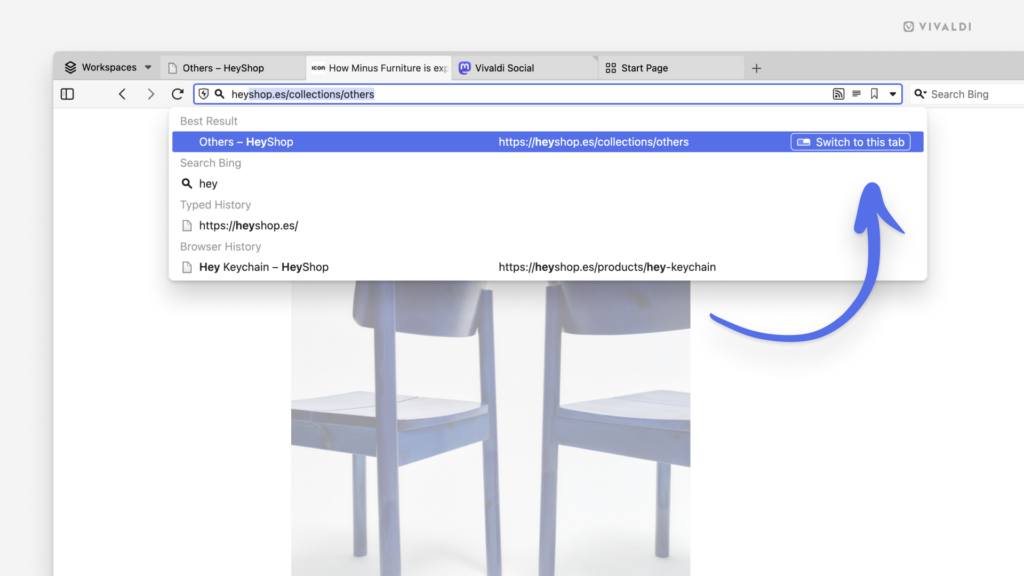
Tip #513
June 21, 2024
Skip Vivaldi Mail’s composer window and send a quick reply message right below the open email.
Vivaldi Mail’s Quick Reply is perfect for those fast, short replies, and feels like using an instant messenger. By removing the need to switch screens to open the composer window, this feature allows you to respond to emails more quickly.
To send a quick reply:
- Open the email message you want to reply to.
- Focus on the text field at the bottom of the message pane.
- Type your message.
- Click “Send”.
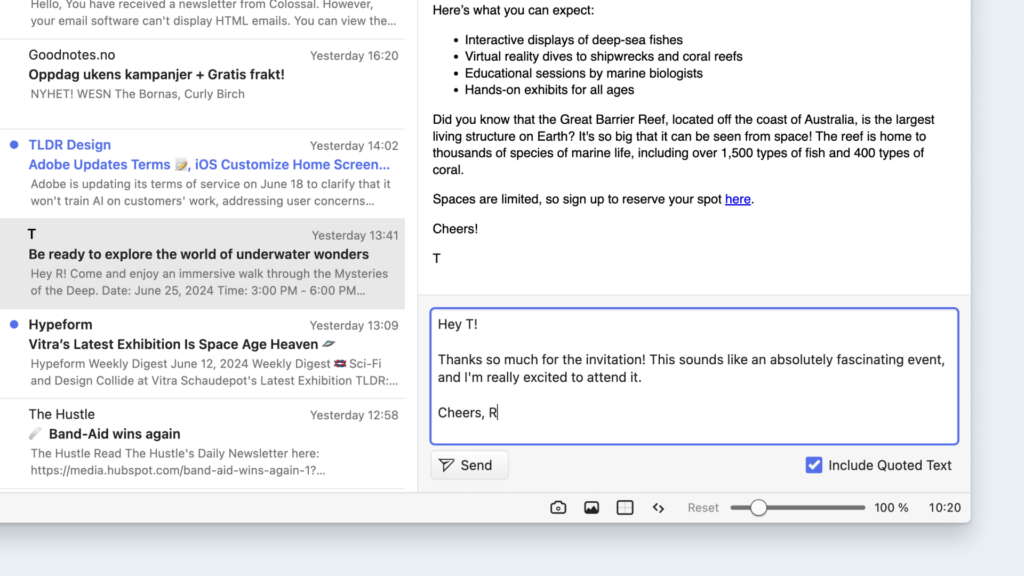
Tip #512
June 20, 2024
View tabs’ real-time memory usage from their thumbnail previews.
When you feel like the browser is getting a little sluggish, it’s likely that one or more of the tabs is using a lot of resources. In that case, it might be a good idea to close or at least hibernate the tab(s). To find the resource hogs, simply hover over a tab on the Tab Bar to view their memory usage.
If you don’t see Tab Thumbnails on hover, go to Settings > Tabs > Tab Display > Tab Options and make sure “Show Popup Thumbnails” has been enabled.
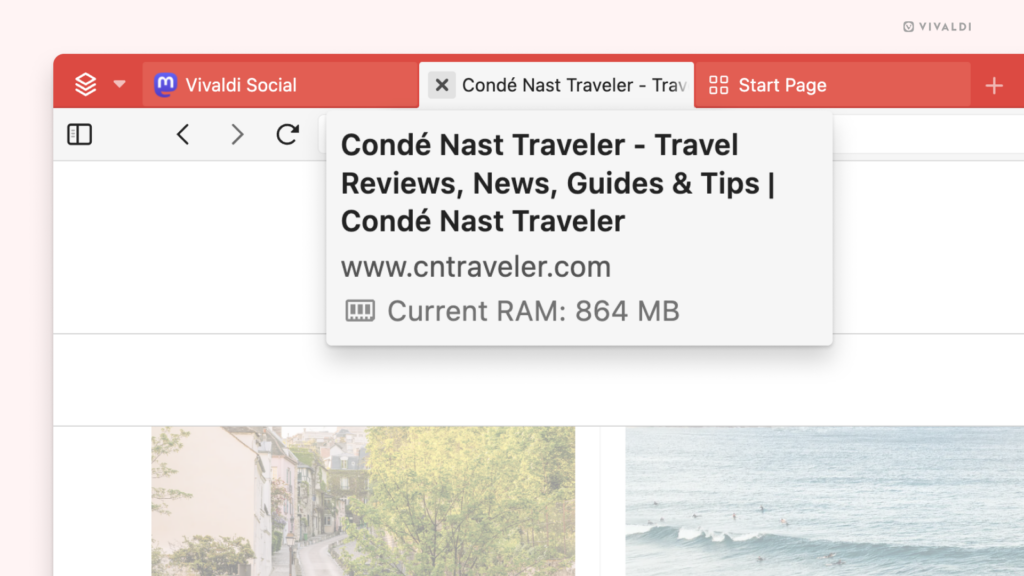
Tip #509
June 17, 2024
Open Web Panels in new tabs from the panel’s context menu.
Web Panels are great for taking a quick glance at a website, but occasionally the mobile-sized view may not be enough. In that case, you can open the current page you have open in the Web Panel in a tab instead.
To open a Web Panel in a tab:
- Right-click on the Web Panel’s icon on the sidebar.
- From the menu, select “Open In” and where you want to open the tab:
- New Tab,
- Background Tab,
- Current Tab,
- New Window,
- New Private Window.
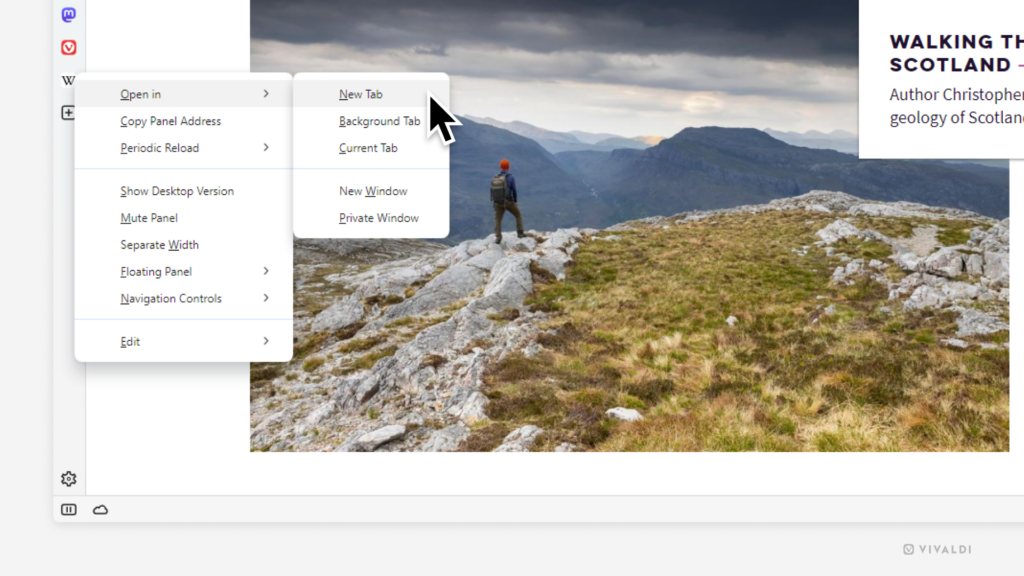
Tip #507
June 13, 2024
Make a list of your preferred languages in which to display web pages.
Some websites offer their content in multiple languages. In which language they display the pages in your browser depends on your language settings. Make sure to include all the languages you speak and list them in the order of preference.
To update your list of accepted languages:
- Go to Settings > General > Language > Accept Languages.
- Click on the
 Add Language button to select a language you speak.
Add Language button to select a language you speak. - Use the arrows to change the priority of the languages.
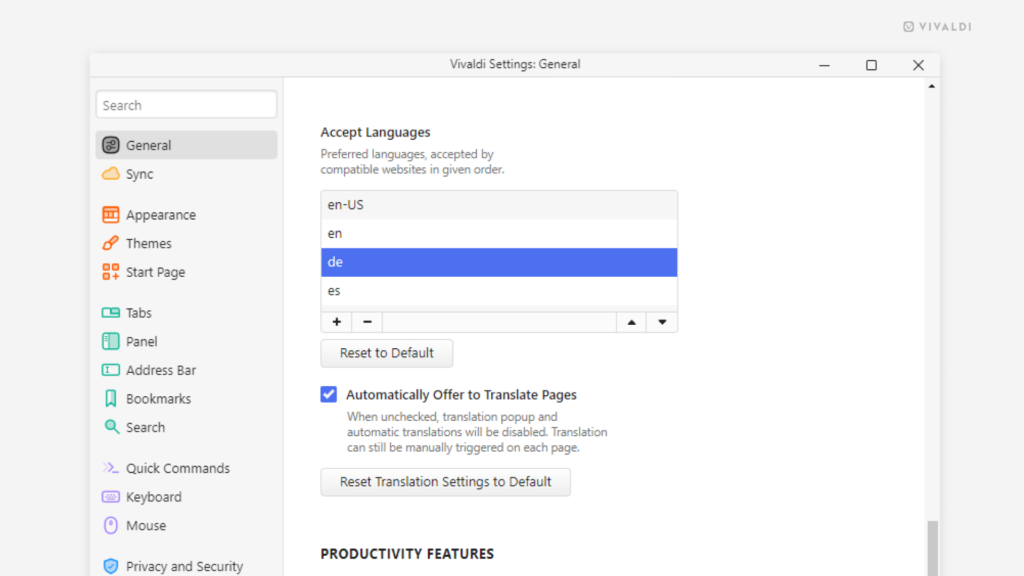
Tip #504
June 10, 2024
Hover over the Workspaces menu and scroll to switch Workspaces.
If you have “Switch Tabs By Scrolling” enabled in Settings (see Tip #184), you can switch tabs by using the scroll wheel on your mouse. But did you know, that you can also switch Workspaces like that?
To switch Workspaces:
- Hover the mouse cursor over the Workspaces menu on the Tab Bar (or wherever you’ve moved it to).
- Use the scroll wheel to move to the next or previous Workspace.